|
Beginning Blogging When I was hired at San Pasqual Academy in 2006, the school was already blogging. I was expected to join my new colleagues by creating a blog using Blogger and to post homework assignments before leaving work each day. Sometime around 2009, I began having my students blog. I regret to say that I am unsure of the timeline because I actually deleted the first few years of my blog posts while I was pursuing my first MA because I was embarrassed of their outdated methods and content. Anyway, each student had a Blogger account and regularly posted their writing. I linked all of their blogs to my blog so we could share comments. The blogs were public. I shared URLs the students’ invested adults and taught them how to comment during conferences. Once we began receiving comments from strangers, we became excited. We added widgets that mapped the location of our visitors using little red dots. Eventually, we added labels--a predecessor to the hashtag--and used Google Reader to aggregate our feeds. The students used images, embed codes, and links to enhance their posts. As we began using Google Docs (now known as Google Drive) and Web 2.0 tools, they also embedded these into their feeds. I knew I was giving my students and authentic global audience, raising the stakes of their work, supporting collaboration, providing transparency, and increasing their technology skills while helping them build positive online reputations. This was more than five years ago. I was was one the early adopters. I believed in the work I was doing. But, I stopped. Changes Three years ago, my district, San Diego County Office of Education’s Juvenile Court and Community Schools, experienced changes in leadership. Under the previous administration, I had been encouraged to be innovative and was supported through obstacles. But, the technology coordinator was transferred to another department and the executive director and my principal were released. The new administrators, and administrators from the county office, began to express concern about potential problems that may arise from allowing students to produce public work using their own accounts using district devices and internet connection. I suddenly began to see potential mistakes as liabilities. Additionally around that time, my campus experienced a challenge in student privacy when the local newspaper asked to write an article about our football team but instead revealed information about a player’s father who had been involved in a major local news story. Our doors to global audiences began to close. Our “first-in-the-nation” residential academy that had aired graduation ceremonies on local television stations and been featured in numerous television shows and magazines, including the Today Show and Sports Illustrated, began to be more concerned with privacy than building our reputation. I was afraid the students’ lawyers and educational rights holders would not understand the benefits of their youths’ blogs. Instead of attempting to speak up, persuade them, or even create a compromise, I just moved away from the blogs. Also, I no longer needed my classroom blog to post assignments because I was using Edmodo, which created a Facebook-like assignment feed and gradebook. Currently, I use Haiku learning management system. My old classroom blog has not been updated since February of 2013. To address the safety risks, my district began using Google Apps for Education (GAFE) three years ago. Our technology resource teacher, Jeff Heil (@jheil65), encouraged and supported me as I guided my students in transitioning from their personal Google accounts to monitored GAFE accounts. My current juniors were the last class to create public blogs. Present Status Currently, my students have blogs, but we do not really use them. I do not even have a complete aggregated list of their links. We do not use the comment features. We still share our work publicly by posting it to their personal social media, but we do not intentionally write for a public audience. I know that I need to re-establish the practice of blogging in my English 9 and 10 classes. The student voices in “Transforming Teaching and Learning with an Authentic Audience” from Jeff Jakob (2013), remind me of why I need to find a way to reintegrate public blogging into my curriculum. As Grant Wiggins stated in the Jakob (2013) video, “Students work harder with a much greater focus on what they are trying to accomplish when there is a real and virtual audience they have to deal with.” I believe this. I have already experienced it. Now, I just need to have the courage to take risks by using blogging again. Blogs are a simple way to create opportunities for my students to connect with a global audience. Blog Archives I am forcing myself to share these blogs. I feel like I am sharing a draft version of a writing process and like I need to justify them. I will keep it simple. They are from years ago and I was still learning. They are not perfect. There are years of growth that has occurred since I left these behind, but that is for another time. Reference
Jakob, J. (2013, June 6). Transforming Teaching and Learning with an Authentic Audience. Retrieved June 15, 2015.
0 Comments
Leave a Reply. |
@npriesterA collection of my learning from SDSU EDL 680 Seminar in Personalized Learning Archives
August 2015
Categories |
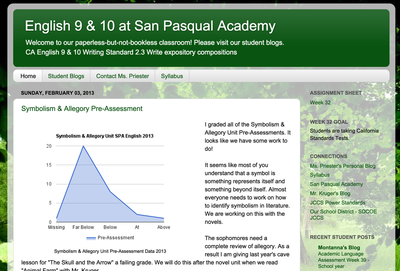
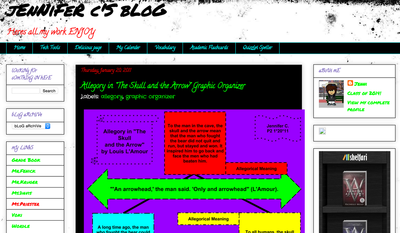
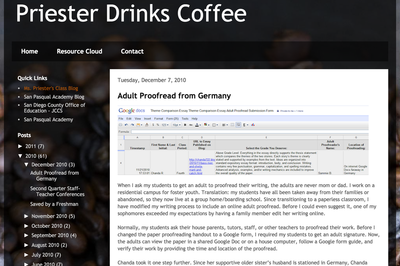
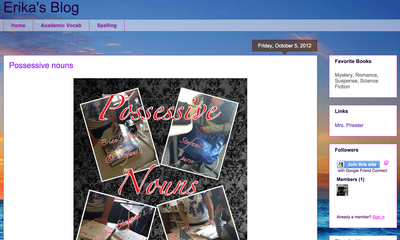
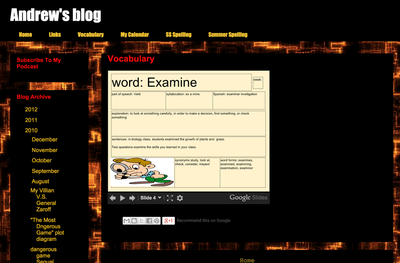
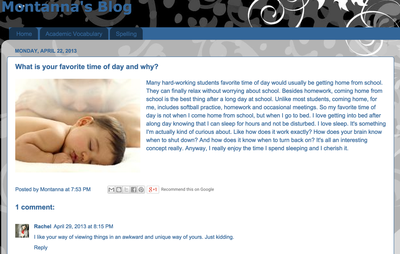
 RSS Feed
RSS Feed